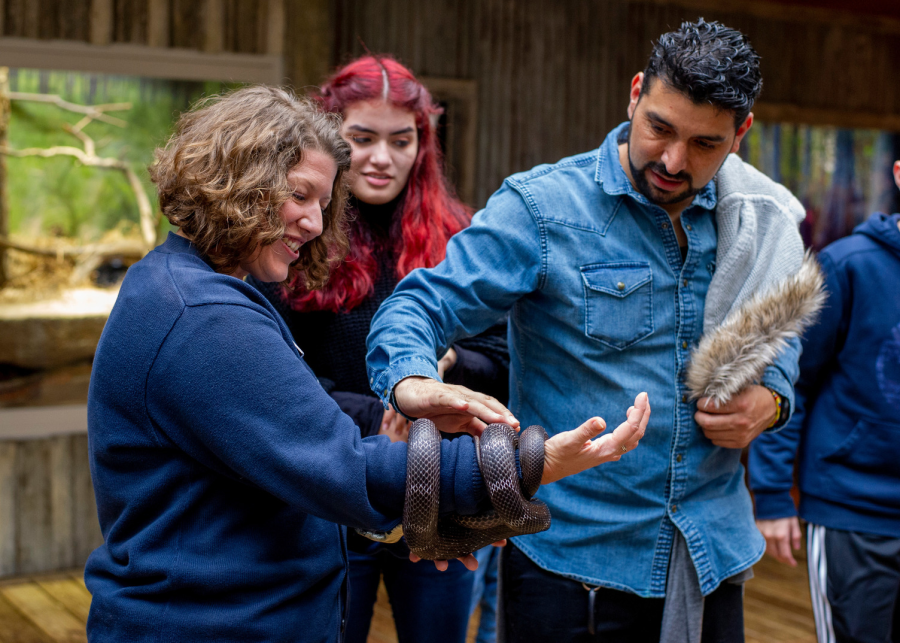Putting Policies and Procedures in an Employee Manual

When the Tennessee Aquarium reopened to the public in June and its staff returned, numerous updates were needed in the aquarium’s employee manual.
“We had to make many changes due to COVID-19, and these changes were sent individually, but we wanted everyone to get all of the new policies at one time,” says Julie Piper, vice president, chief human resource officer.
Those updates included adding the aquarium’s reopening plan for 2020 and COVID-19 safety practices; the employees’ retirement plan; the Coronavirus Aid, Relief, and Economic Security (CARES) Act; the medical flexible spending arrangement (FSA); and the work from home policy.
As attractions are revising manuals, handbooks, and standard operating procedures (SOP) for new policies related to COVID-19, it could also be the perfect time to revisit the rest of the content.
The Purpose of a Handbook
A manual gives employees clear direction of the rules they must follow and what the company expects from them, says Scott Behren, an attorney with the Behren Law Firm in Weston, Florida. The document should include discipline procedures for noncompliance, social media policies, dress code, and harassment and bullying policies.
“The employee manual must reflect the culture of your business and your branding, so it’s reinforced and increases the employees’ buy-in,” says Charles Krugel, an attorney who specializes in labor and employment law and human resources counseling in Chicago.
Krugel also recommends using the attraction’s name in the manual, avoiding the phrase “the company,” “the entity,” or “the organization.” The more generic the document, he says, the less people buy into the manual or give the handbook’s policies credence.
What to Include
Depending on the attraction, what needs to be addressed will differ. For the Tennessee Aquarium, Piper says the manual includes the attraction’s vision and mission statement, information regarding preemployment and employment, compensation policies, benefits, time-off and leave of absence requests, workplace conduct requirements, safety and security policies, COVID-19 safety guidelines and practices, general SOP, and a contact list.
Krugel recommends owners and operators seeking to compose their first manual ask their insurance company, chamber of commerce, or IAAPA for a manual template (see p. 55 for more information).
Should an Attorney Check Your Manual?
Piper says the Tennessee Aquarium wanted to make sure its SOP language was appropriate and legal; therefore, the aquarium hired a lawyer to examine the handbook. Although its handbook has never been used in litigation, she says it’s a great reference to make sure policies are followed across all departments.
“It’s a good idea to have an attorney review your policies and procedures manual,” says Krugel. “He or she can make sure no laws are violated in the document.”
For example, a handbook might include SOP preventing employees from talking about their salaries, Krugel says, and often, that’s illegal.
Counsel signing off on a manual doesn’t improve it, but does add credibility, says Krugel. Sometimes insurance companies require these manuals, as do some government regulatory agencies.
“Employee handbooks become important if a litigation comes up. You’ll likely get into some portion of the manual like equal opportunity employment, discrimination policy, or an issue of getting paid. When it’s spelled out in the manual, you can refer to your policy,” Behren says.
How to Distribute
Whether a manual is printed or made available digitally depends on the culture of a business, says Krugel. However, be consistent. For example, if an attraction communicates with employees online, it should continue the practice because that’s what employees are used to, he says. Making changes to an online handbook remains much easier than reprinting the entire document.
“We do both for easy access for staff. HR (human resources) can make updates and inform staff about those with the online version,” says Piper. “We also offer to print a hard copy at the request of any employee.”
Jeff Gebhart, CEO of Craig’s Cruisers Family Fun Centers, a collection of family entertainment centers (FECs) in Michigan, says he has recorded some manual elements in a video format and hopes to make all his SOP available in video eventually. This way, the FEC staff can watch, which is a more effective way to train, rather than sit and read through a handbook, he believes.
No matter what method attractions choose, they should make sure employees sign a form acknowledging they received the manual. This also holds true for any new SOP amendments made.
Review and Revise
According to Krugel, an evaluation of policies and procedures should take place once a year to see if they need to be rewritten. If front-line employees must make changes due to the pandemic, that should be addressed.
When a manual already exists at an attraction, Behren says an addendum to the existing one works well. Add pandemic-specific policies around personal protective equipment (PPE), testing, social distance rules, and anything else that applies.
Gebhart says managers at Craig’s Cruisers locations put together a cleaning task force, sat through many webinars and meetings, and talked to other facilities about best practices in order to provide a safe environment when they reopened. The FECs then created a six-page document for their team to use.
“If you think an employee can read a manual and then be proficient at their job, you’re kidding yourself,” says Gebhart. “The manual is just one spoke in the wheel of getting someone trained up.”
No matter the number of employees at a facility, the handbook should not be optional, says Behren. Some attractions have more extensive manuals than others, but handbooks shouldn’t be ignored.
IAAPA HR Sample Employee Handbook
Ready to create an employee manual? The IAAPA HR Sample Employee Handbook is written in the layout and structure of an employee handbook. Best practices and advice from human resources experts guide users through the process of customizing the sample document to fit their attraction. The manual template is free to IAAPA members and is available for nonmembers to purchase. Visit IAAPA.org/Manual.
